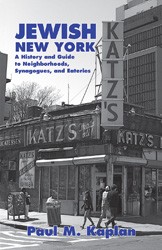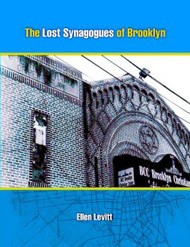In New York’s Chinatown, surrounded by tenements and small shops, stands the stately Eldridge Street Synagogue. Restored to its original splendor in 2007, the synagogue is a monument to the East European Jews of the Lower East Side who strove to preserve their traditional Orthodox Judaism even as they were adapting to the realities of their new country.
Through Landmark of the Spirit Annie Pollard, vice president for education at the Museum at Eldridge Street, provides a capsule history of Orthodox Jewry in the United States and the challenges it faced from the established Jewish communities, who were turning to Reform Judaism with its impressive synagogues, family seating, and hushed decorum. Perhaps because of these challenges, two downtown Orthodox congregations merged in the 1880’s in order to build a majestic synagogue. Moorish in design, with elements of Gothic and Romanesque architecture, the Eldridge Street Synagogue featured a rose window with Star of David motifs, a soaring ceiling hung with an elegant chandelier, and an imposing façade.
From its beginning the synagogue embraced American life. Decorum was encouraged, with spittoons lining the aisles, men in top hats, and assigned seating. Women pushed aside the curtains that cut off their view from the balconies and played important roles in the synagogue, organizing community and charity projects. But the synagogue, led by scholarly and impassioned rabbis, always maintained and supported traditional education, learning, and communal obligations.
As the Lower East Side community changed and residents left its crowded quarters for Harlem, the Bronx, and the other boroughs, the once vibrant sanctuary fell into disrepair; in the 1950’s, daily worship — “the tenacious congregation never missed a Sabbath service” — was held in the study hall. In 1971, like a sleeping princess, the synagogue and its elegant façade attracted Gerald Wolfe, a New York University professor; he spearheaded the twenty-year project to restore the synagogue. Declared a National Historical Landmark in 1996, today the synagogue is a museum and educational center — with regular Sabbath and holiday services. Illustrations, index, notes, selected bibliography.
Maron L. Waxman, retired editorial director, special projects, at the American Museum of Natural History, was also an editorial director at HarperCollins and Book-of-the-Month Club.




